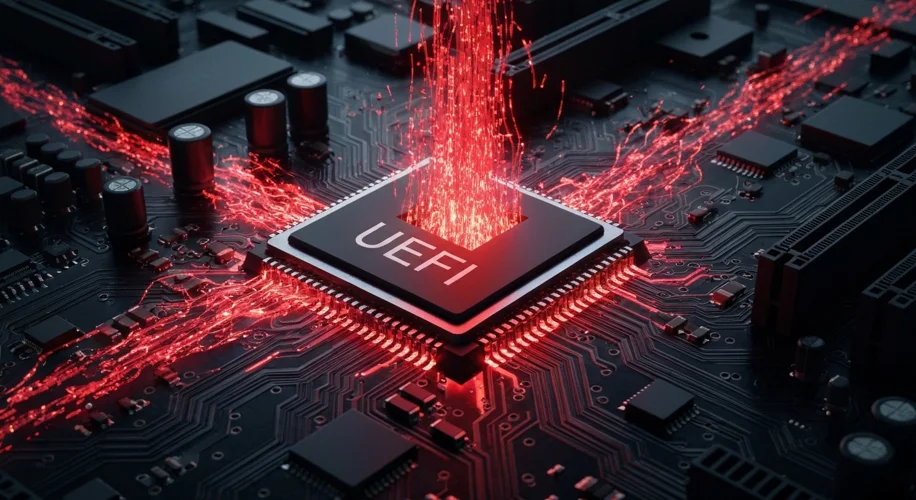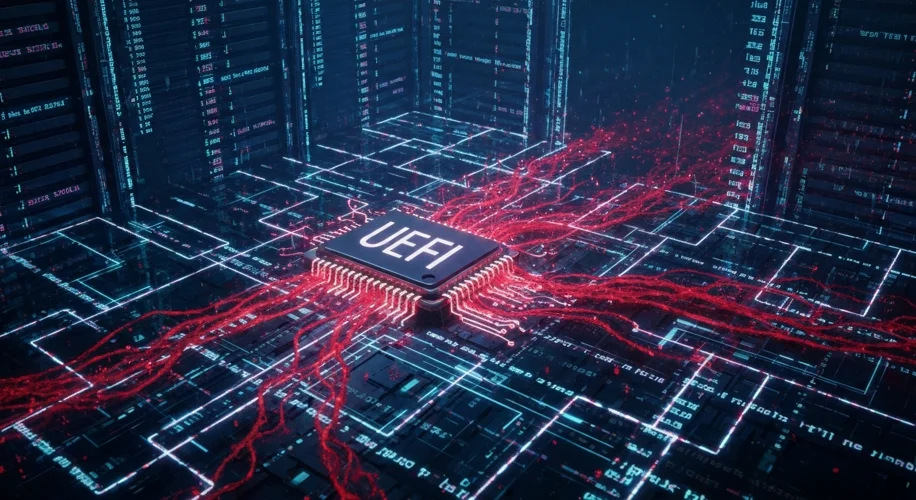In the ever-evolving landscape of digital conflict, a new breed of adversary has emerged, capable of striking at the very foundation of our interconnected world. Today, September 13, 2025, we delve into the chilling sophistication of modern cyber warfare, focusing on the Petya ransomware and its particularly insidious variants that leverage vulnerabilities like CVE-2024-7344 within UEFI Secure Boot.
For years, ransomware has been a persistent nuisance, encrypting files and demanding ransoms. However, the Petya family represents a quantum leap, transforming from a mere digital extortion tool into a weapon of mass disruption. Its targets are not just individual files, but the fundamental integrity of computer systems, aiming for widespread chaos.

The Foundation of Trust Undermined
At the heart of Petya’s advancement lies its ability to exploit UEFI Secure Boot. Think of UEFI Secure Boot as the digital gatekeeper of your computer. When you turn on your machine, it’s responsible for ensuring that only trusted, digitally signed software loads. This process is critical for preventing malware, especially rootkits, from gaining control before your operating system even has a chance to start.
Historically, ransomware operated at the application layer or within the operating system itself. This meant that security software, while often challenged, had a fighting chance to detect and neutralize the threat. However, Petya’s targeting of UEFI Secure Boot is akin to an enemy infiltrating the very foundations of a fortress, bypassing all outer defenses. By compromising this early stage, Petya can achieve unparalleled control, making detection and removal exponentially more difficult.
CVE-2024-7344: A Digital Skeleton Key
The specific vulnerability, CVE-2024-7344, acts as a digital skeleton key, unlocking the protected pathways within UEFI Secure Boot. While the technical intricacies are complex, the outcome is devastatingly simple: attackers can inject malicious code that runs with the highest level of system privilege, effectively becoming part of the system’s core from the moment it powers on.
This allows Petya variants to not only encrypt data but also to tamper with the boot process itself. Imagine turning on your computer only to find the very system that starts it up has been corrupted. This is the reality Petya can impose, rendering the machine inoperable and beyond the reach of conventional recovery methods.
The Ghosts in the Machine: Impact and Evolution
The impact of such attacks transcends financial loss. They can cripple critical infrastructure, disrupt supply chains, and sow widespread panic. Unlike traditional cyber warfare, which might target specific military or government systems, Petya’s ability to leverage a fundamental system vulnerability means it can affect a vast array of targets, from individual users to large corporations and even national entities.
The evolution of Petya demonstrates a disturbing trend: cybercriminals and state-sponsored actors are increasingly focusing on deep-system vulnerabilities. This shift is driven by the desire for greater stealth, wider impact, and a more profound disruption.
Lessons from the Digital Battlefield
The Petya attacks, particularly those exploiting UEFI Secure Boot, serve as a stark reminder of our digital vulnerabilities. While patching software and using reputable antivirus are crucial, the sophisticated nature of these threats necessitates a multi-layered approach to cybersecurity. This includes:
- Regular Updates and Patching: Ensuring all firmware, including UEFI, is up-to-date is paramount to close known vulnerabilities.
- Hardware Security Features: Understanding and utilizing built-in security features like Secure Boot correctly is vital.
- Advanced Threat Detection: Employing endpoint detection and response (EDR) solutions that can monitor system behavior at a deeper level.
- Incident Response Planning: Having robust plans in place to mitigate damage and recover from sophisticated attacks.
The digital age presents us with unprecedented opportunities and interconnectedness, but it also introduces new frontiers for conflict. The Petya ransomware, with its ability to subvert the very essence of system trust, is a potent symbol of the complex and often invisible battles being waged in cyberspace. As we continue to navigate this digital frontier, understanding these threats is not just a matter of technical interest, but a necessity for our collective security.

